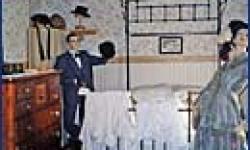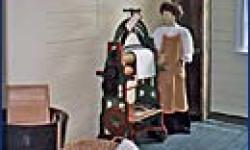The Helensville Pioneer Museum is located at the Riverside Reserve, Mill Road, Helensville, Northland, New Zealand.
The Helensville Pioneer Museum has been open to the public (apart from its current transition period) since December 1970, when Hedley House, as it was known, was officially opened by then Helensville Member of Parliament, the late Peter Wilkinson.
On the town site in Helensville, Hedley House was the administration centre as well as display area, featuring kitchen, living and bedroom areas and annex displays covering a range of social history, Maori artefacts, Milling and timber, kauri gum, and a family history section. After the move the display emphasis changed
The oldest remaining small District Courthouse in theNorthland/ Auckland region, and believed to be the second oldest in New Zealand, Helensville?s original and only courthouse was opened on June 7, 1864 as the main District Court and Maori Land Court for Kaipara and lower Northland.
Here many historic Maori Land Court cases of the 19th and early 20th centuries were decided, hence its significance to Ngati Whatua.
Presided over by Maori Land Court judge and local resident Magistrate, Judge John Rogan, who had been the area?s judicial authority since 1858, it was sited originally close to the Kaipara River above the first Helensville Railway Station at the south end of town on land donated to the Crown by Te Otene Kikokiko, a rangatira of the Te Taou hapu of Ngati Whatua.
Its new location restores its proximity and association with the river. The judge's bench and chair, prisoner dock and witness stand are still intact.
Kauri timber for building came from the McLeod?s Helensville mill, and the original kauri posts and rails that enclosed the Courthouse were donated by the rangatira Te Tirarau from the Tangiteroria area.
Alongside the main entrance is what was a dispensary, added in 1865 for the use of Dr Nicholson, who treated patients there once a week. However this service lapsed after a year due to the lack of Maori patronage. Facing it was the access to Judge Rogan?s living quarters, which he occupied until his own home, ?Te Makiri? was completed in 1866. Later, his boatman, James Hand, lived in those quarters.
For several years, the courthouse was used as a meeting place by the Helensville Town Board, established in 1883, and was also the local police headquarters for some years.
The Courthouse remained in use until 1979 and was acquired by the Society in 1982.
On the town site, the police office area of the courthouse was used to display Kaipara Harbour photos, maps, charts and artefacts, and also housed the extensive collection of photographic display albums.
The Museum?s latest building addition - and its new service centre - is Helensville Primary?s original Schoolmaster?s House. Built in 1883 at a cost of £429 by Mr A J Haszard and occupied by Irishman Mr D D Metge (popularly known as ?DD?), headmaster until 1900.
Described as ?an impressive man and in many ways, beyond his time in educational methods?, "DD" was born at Seabrook, Ulster and sired 10 children, nine of who were born in Helensville. He, his wife and three of their children are interred at the Helensville cemetery.
Interior alterations to the landmark building were carried out in 1977 to mark the school?s centenary - and, more importantly as a response to the Education Board?s intention at the time to demolish and replace it. In its latter years, it was used as the school hall and was gifted to the Society by the school?s board in 1999. It was stored offsite for us by Eurovision Building Removals Ltd, of Helensville, until being moved onto our Helensville Riverside Reserve site in December 2003.
Much remedial renovation and refurbishing work has been carried out on the building since then to create our administration centre, a dedicated archives room, men?s, women?s and disabled-access toilets, improved kitchen facilities and a large display area.
The Kaipara Room features Maori artefacts from the Ngati Whatua tribe, the history of kauri gum, milling and shipping. A large wall map of the Kaipara Harbour pinpoints wrecks and strandings.
The research area of the Museum has been named the John Pyatt Archive, in recognition of the sterling work done by foundation member John Pyatt in setting up the comprehensive collection of papers and documents. Also housed in the Schoolhouse are the Society?s impressive photographic collection, including the Alan Jordan Kaukapakapa collection, the oral and family histories, and pioneer portraits.
A sophisticated internal security/smoke detection system protects all buildings, while our advanced communications equipment, apart from providing telephone, fax and Internet access also enables callers to be connected directly to key officers and Museum specialists.
Formal landscaping is underway, featuring shrubs and plants typically used by South Kaipara pioneers to enhance natural scenery. A shelter belt includes native trees which were part of the early Kaipara landscape. Some thought has been given to establishing a ?heritage? orchard. Given the length of our lease, the current Executive Committee is determined to make the utmost use of this site as a visually attractive introduction to our visitors.
The next building planned for the village is to be the Nicholls Memorial Barn.



Helensville Pioneer Museum reviews
Login to comment